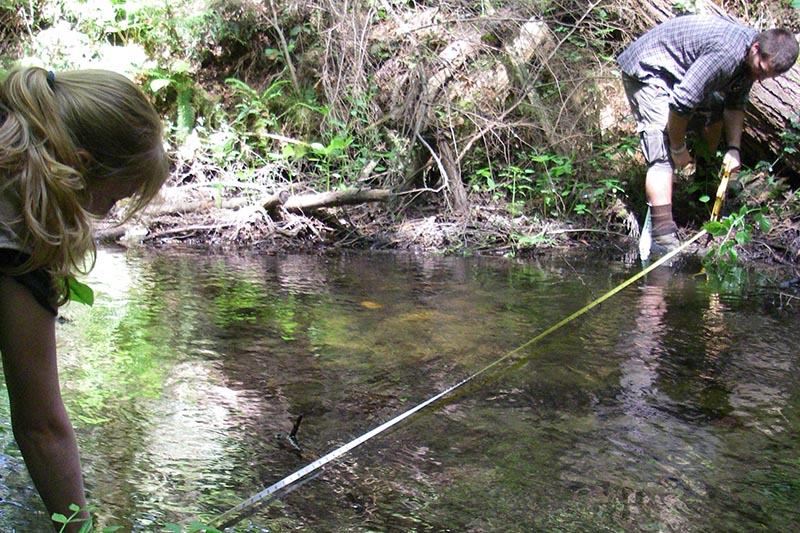Habitat monitoring methods
We monitor the health of streams by measuring the health of habitat, water, and sediment chemistry.
We collect a variety of data to evaluate conditions at rivers and streams throughout Washington. In addition to collecting biological data — such as fish, macroinvertebrates, and periphyton — we measure a variety of habitat, water, and sediment chemistry, as well as multiple physical parameters. It is vital to collect data using consistent procedures and methodologies, which allows us to evaluate the data for patterns and trends across time and space.
Different studies, same protocols
Several monitoring studies, each addressing different questions — such as Watershed Health Monitoring, Stream Biological Monitoring, Status & Trends Sentinel Monitoring, and Water Quality Improvement Effectiveness Monitoring — all use the same protocols when collecting biological, chemical, and physical parameter data at a particular stream reach. We collect all data during our annual sampling period, from July 1 to Oct. 15.
Reaches divided into transects
All stream reaches sampled are divided into 11 transects. In each of these, we collect a variety of data on substrate size, riparian and fish habitat, large woody debris, and various measures of human disturbance.
Raw habitat data are recorded in electronic field forms loaded on tablets. The data are uploaded directly into our Watershed Health database, where 262 habitat metrics are calculated and reported. More information about the habitat metrics and the methods we use are provided in the links below.
- Dictionary of Metrics for Physical Habitat: Definitions and Calculations Used for Watershed Health Monitoring and Related Studies is the data dictionary for habitat metrics in EIM.
Get guidance for use of electronic field forms by directly contacting the Watershed Health Monitoring Database Coordinator.
Quality assurance monitoring plans
- Status and Trends Monitoring for Watershed Health and Salmon Recovery: Quality Assurance Monitoring Plan
- Quality Assurance Monitoring Plan: Ambient Biological Monitoring in Rivers and Streams: Benthic Macroinvertebrates and Periphyton
Standard operating procedures
We are regularly update our standard operating procedures. To request the latest SOP, please contact our science lead listed below.
Contact information
Edward M. Krynak
Watershed Health Monitoring Lead
edward.krynak@ecy.wa.gov
360-742-1581


